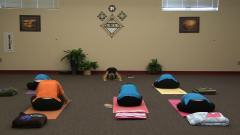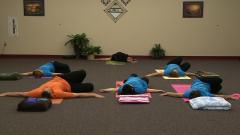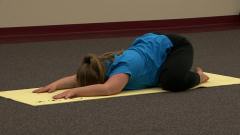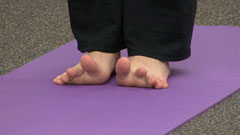Educational
- Stimulates the brain
- Develops and increases focus, attention, listening, following directions, and organizational skills
- Increases concentration and memory
- Develops balance and coordination skills
- Develops perceptual skills
- Develops gross and fine motor skills
- Increases vocalization and rhythmic skills
- Increases confidence and healthy attitudes toward new challenges
Health
- Improves body alignment, posture and patterns of movement
- Reduces and relieves stress and anxiety
- Strengthens the immune system
- Increases strength, flexibility, balance, coordination and muscle tone
- Improves organ function
- Helps to regulate blood sugar and blood pressure
- Creates a greater sense of vitality and well-being
Social
- Improves self image—diminishes negative feelings and frustration
- Develops necessary boundaries and respect for self and others
- Creates/restores a feeling of self control
- Increases body awareness
- Encourages a positive outlook on life
- Cultivates a better relationship with self and others
- Develops tolerance and compassion
- Fosters cooperation
- Become more mindful, confident, responsible and self-directed
Emotional
- Meets the student where they are
- Nurturing, non-competitive, non-judgmental environment
- Acceptance without the stress of performance
- Boosts self–confidence
- Challenging poses teach us not to give up
- Can energize us or slow us down, if needed
Sensory
- Tactile/Touch – bare feet feeling the floor or mat (grounding); hands touching various part of the body or mat
- Proprioception – (muscles, joints and body awareness) balancing and weight bearing postures, changing body positions, repetitive flow of postures
- Vestibular (posture and balance, muscle tone, motor control and language skills) transition between postures, directional changes, stop/start motions and flexion/extrusion movements
- Visual (action of eye muscles and the ability to mirror what the eyes see, visual discrimination, memory sequencing) – imitation of postures, sequencing postures
- Auditory (processing auditory information, sound recognition and reproduction, discriminating between sounds) listening for the breath
- Relaxation response is engaged
- Sensory system is soothed
- Strengthens, balances and tones the nervous system
- Develops self-awareness of the body, mind and breath
Did you know?
Yoga has countless benefits for special needs children, teens and adults with autism, developmental disabilities, Down Syndrome, ADD, ADHD, learning disabilities, cerebral palsy, and emotional and behavior disorders. Yoga is great exercise and stimulates and increases educational, physical, health, social, emotional and sensory skills needed in social situations, in the classroom and in life!








